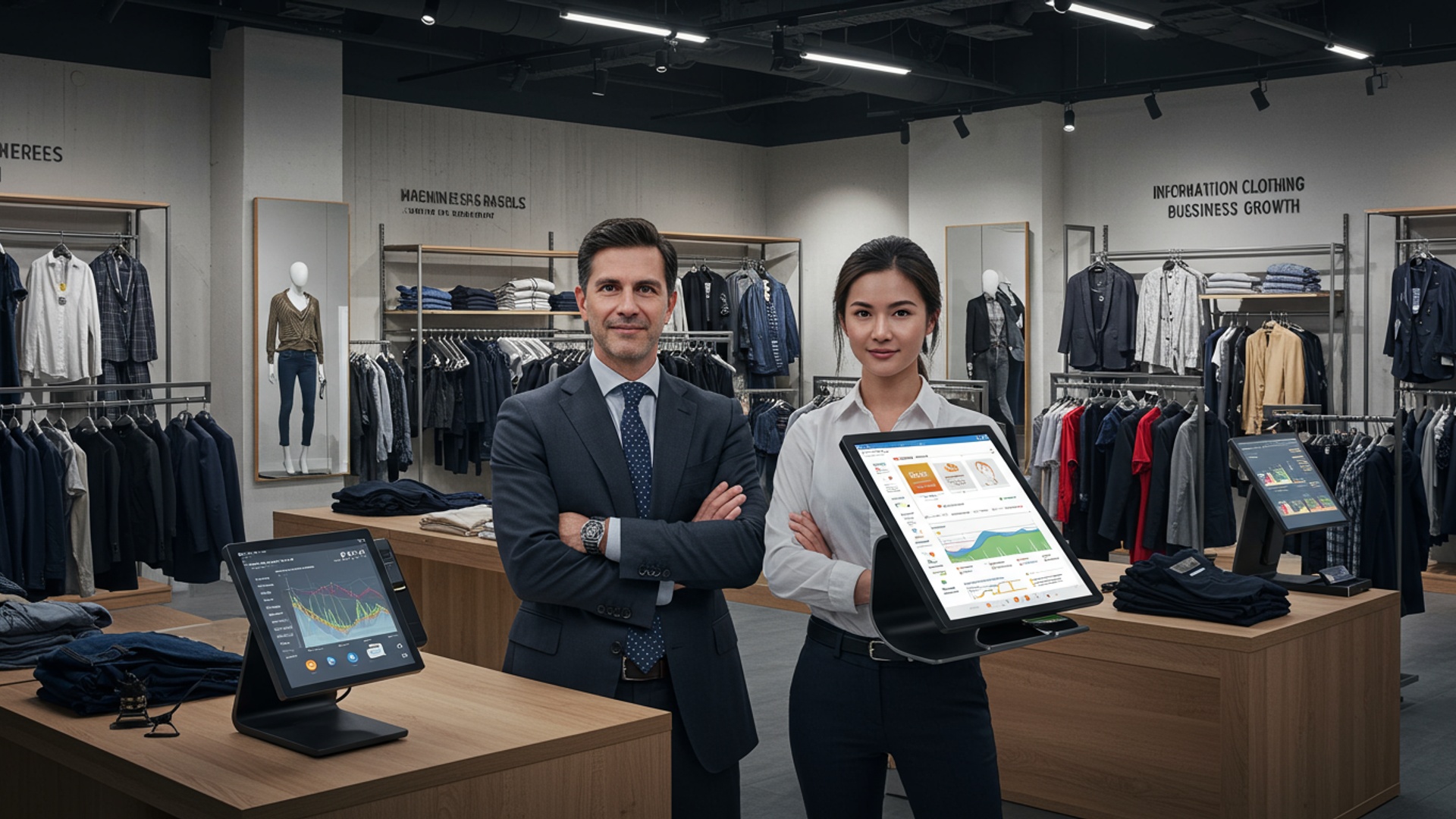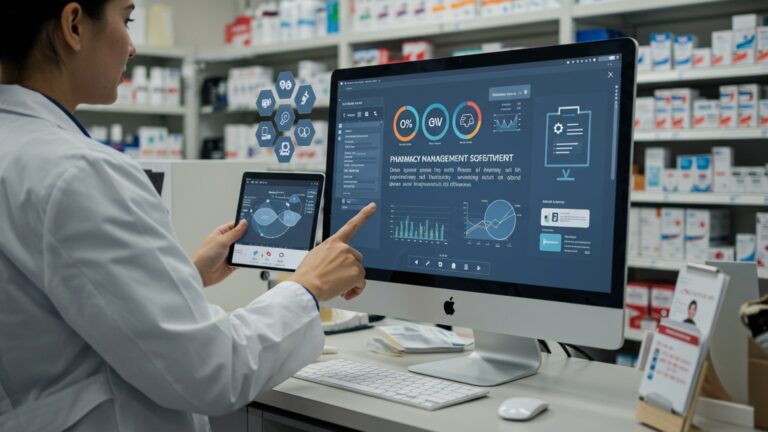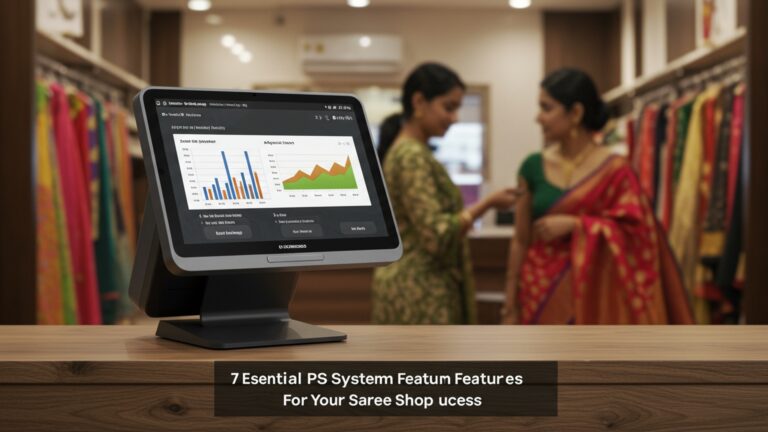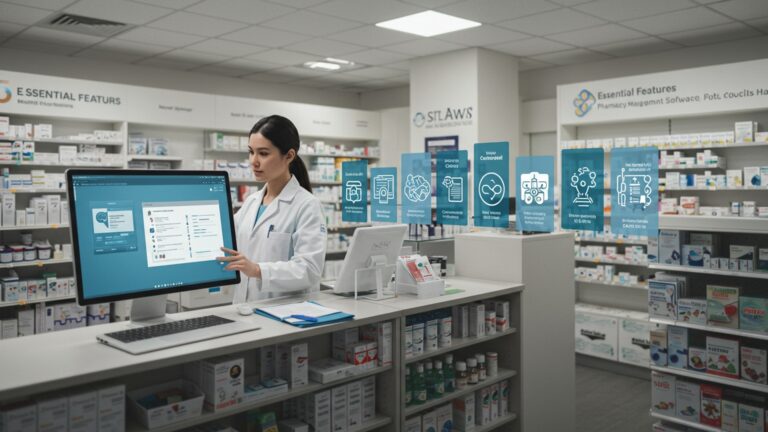Learn 10 Powerful POS Strategies for Multi Outlet Clothing Business Growth
In the dynamic multi-outlet clothing retail landscape, fragmented data and inconsistent customer experiences often stifle growth, leaving businesses grappling with accurate real-time inventory across diverse locations. This directly impacts crucial omnichannel strategies like BOPIS (Buy Online, Pick Up In Store) and seamless returns. A powerful multi outlet clothing POS system transcends simple transaction processing, evolving into the central nervous system for synchronized operations. Forward-thinking retailers leverage these advanced platforms to unify sales data, track customer preferences for personalized marketing. optimize stock levels to prevent costly overstocking or missed sales opportunities. Proactive adoption of integrated POS solutions is no longer optional; it’s essential for scaling efficiently and delivering the seamless, engaging shopping journey today’s discerning consumers demand, ultimately fueling significant revenue expansion and market leadership.

1. Centralized Inventory Management Across All Outlets
One of the foundational pillars for any thriving multi-outlet clothing business is impeccable inventory control. Without a centralized system, managing stock across multiple locations can quickly devolve into chaos, leading to lost sales, overstocking. dissatisfied customers. A robust multi outlet clothing POS system provides a single, unified view of all your inventory, no matter where it’s physically located.
What it Means:
Centralized inventory management means that every sale, return. stock transfer from any of your stores is immediately updated in one master database. This real-time visibility allows you to see exactly how many units of a specific dress size, color, or style are available across your entire network, not just in one store.
Real-world Application:
Imagine a customer walks into your downtown boutique looking for a specific designer jacket. it’s out of stock in their size. With a centralized inventory system, your sales associate can instantly check its availability at your suburban outlet or warehouse. They can then arrange for an inter-store transfer, a direct ship-to-customer from another location, or even inform the customer when new stock is expected. This prevents a lost sale and significantly enhances customer satisfaction. Without a dedicated multi outlet clothing POS system, this level of service would be impossible or incredibly inefficient.
Actionable Takeaway:
- Implement a multi outlet clothing POS system that offers real-time, cross-location inventory tracking.
- Train staff to utilize the system for checking stock availability and initiating transfers.
- Regularly conduct stock audits across all locations, cross-referencing with your POS data to minimize discrepancies.
2. Integrated Customer Relationship Management (CRM)
Understanding your customers is paramount for growth. A powerful multi outlet clothing POS system extends beyond just processing transactions; it integrates CRM functionalities that help you build lasting relationships and tailor experiences, even across different store fronts.
What it Means:
Integrated CRM in a POS system means that every customer interaction – purchases, returns, loyalty points earned, preferences noted – is recorded and accessible from any of your outlets. This creates a holistic customer profile, allowing you to recognize and reward loyal shoppers consistently.
Real-world Application:
Consider a loyal customer, Sarah, who frequents your city store. If she visits your new outlet in a different neighborhood, the sales associate there can immediately access her purchase history, preferred brands. even notes from previous interactions (e. g. , “prefers natural fabrics”). This enables the associate to offer personalized recommendations, mention new arrivals in her favorite styles, or inform her about a special discount on an item she previously showed interest in. This seamless, personalized experience, powered by your multi outlet clothing POS system, fosters loyalty and encourages repeat business, regardless of the store she visits.
Actionable Takeaway:
- Choose a POS system with robust, integrated CRM capabilities.
- Encourage staff to capture customer data (with consent) at every transaction.
- Utilize customer purchase history and preferences to segment your audience for targeted marketing campaigns (e. g. , email new arrivals based on past purchases).
3. Real-time Sales Analytics and Reporting
Data is the new currency. for a multi-outlet clothing business, understanding your sales data in real-time is crucial for agile decision-making. A sophisticated multi outlet clothing POS system transforms raw transaction data into actionable insights.
What it Means:
Real-time sales analytics provide instant access to performance metrics across all your stores. This includes sales by product, category, store, employee, time of day. more. Reports are generated dynamically, reflecting the most current sales figures.
Comparison: Manual vs. POS-Driven Reporting
| Feature | Manual Reporting (Fragmented) | POS-Driven Reporting (Integrated) |
|---|---|---|
| Data Collection | Individual store spreadsheets, often inconsistent. | Automated, unified data from all outlets. |
| Accuracy | Prone to human error, delays. | High accuracy, real-time updates. |
| Time to Report | Days or weeks to consolidate and examine. | Instantaneous, on-demand reports. |
| Insights | Limited, often reactive, difficult to compare across stores. | Deep, proactive insights into trends, store performance. product popularity. |
| Decision Making | Slow, often based on outdated insights. | Fast, informed, data-driven decisions. |
Real-world Application:
Imagine it’s a Tuesday afternoon. you notice through your multi outlet clothing POS system‘s dashboard that sales of a particular seasonal collection are unexpectedly soaring at your suburban store, while remaining flat at your city location. With this real-time insight, you can immediately shift inventory from the slower store to the high-performing one, preventing stockouts and maximizing sales opportunities. Similarly, you can identify your top-performing sales associates or the busiest hours at each store to optimize staffing. This level of granular, immediate data empowers proactive business management.
Actionable Takeaway:
- Regularly review your POS system’s sales dashboards and reports (daily/weekly).
- Use data to identify trends, popular products. underperforming items across different locations.
- Empower store managers with access to their specific store’s performance data, fostering healthy competition and accountability.
4. Facilitating an Omnichannel Experience
In today’s retail landscape, customers expect a seamless shopping experience whether they are online, in-store, or interacting via mobile. A powerful multi outlet clothing POS system is the linchpin that connects these diverse channels.
What it Means:
Omnichannel retail is about providing a consistent, integrated customer experience across all touchpoints. Your POS system acts as the central hub, synchronizing online and offline sales, inventory. customer data.
Real-world Application:
Consider a customer who browses your website, adds items to their cart. doesn’t complete the purchase. Later, they visit one of your physical stores. With an integrated multi outlet clothing POS system, the sales associate can access their online cart, offer those items. even suggest complementary pieces. Another example: a customer buys a dress online but prefers to return it at a physical store. The POS system can instantly verify the online purchase and process the return, offering store credit or a refund seamlessly. This eliminates customer frustration and reinforces trust, bridging the gap between digital and physical shopping experiences.
Actionable Takeaway:
- Ensure your multi outlet clothing POS system integrates seamlessly with your e-commerce platform.
- Offer “buy online, pick up in-store” (BOPIS) and “return in-store” options.
- Train staff to leverage online customer data to enhance in-store interactions.
5. Employee Performance Tracking and Management
Your sales team is critical to your success. A comprehensive multi outlet clothing POS system provides tools to monitor and manage employee performance, ensuring consistent service and motivating your team.
What it Means:
This functionality allows you to track individual sales metrics, commissions, hours worked. even average transaction values for each employee across all your stores. It provides data for performance reviews, incentive programs. staffing optimization.
Real-world Application:
Let’s say you’re launching a new collection and want to incentivize your team. Your multi outlet clothing POS system can track individual sales of this collection across all outlets. You can then reward top performers based on accurate, real-time data. Moreover, if you notice an employee consistently has low average transaction values, you can provide targeted training on upselling and cross-selling techniques. For multi-outlet businesses, this allows for fair and objective comparison of performance across different locations, identifying best practices that can be shared.
Actionable Takeaway:
- Utilize your POS system’s employee tracking features to set clear performance goals.
- Implement incentive programs based on measurable sales data.
- Use performance data to identify training needs and develop your sales team.
6. Streamlined Gift Card and Loyalty Program Management
Gift cards and loyalty programs are proven strategies for customer retention and attracting new business. A sophisticated multi outlet clothing POS system makes these programs easy to manage and redeem across all your locations.
What it Means:
This feature allows gift cards to be purchased at one store and redeemed at any other outlet or online. Similarly, loyalty points earned at one location can be used for discounts or rewards at any store, or through your e-commerce channel, creating a unified customer experience.
Real-world Application:
A customer buys a gift card for their friend at your boutique in the mall. That friend, living across town, can then use that gift card at your standalone street-front store or even on your website. Likewise, a customer who frequently shops at your downtown location can accrue loyalty points and then redeem them for a discount during a visit to your airport outlet. This universal acceptance, facilitated by a centralized multi outlet clothing POS system, removes friction for the customer and reinforces your brand’s commitment to convenience, encouraging more spending and repeat visits.
Actionable Takeaway:
- Implement a unified gift card and loyalty program managed centrally by your POS system.
- Clearly communicate the universal applicability of these programs to your customers.
- Promote gift cards as an easy gifting solution and loyalty programs as a way to reward repeat business.
7. Optimized Returns and Exchanges Process
Returns and exchanges, while often seen as a hassle, are a critical part of the customer journey. A smooth, efficient process, enabled by a multi outlet clothing POS system, can turn a potentially negative experience into a positive one, enhancing customer loyalty.
What it Means:
This strategy involves using your POS system to quickly and accurately process returns and exchanges, verifying original purchase details, applying correct refunds/store credits. instantly updating inventory across all locations.
Real-world Application:
Imagine a customer purchased a shirt from your online store or a different physical outlet. now wants to return or exchange it at a third location. With an advanced multi outlet clothing POS system, the sales associate can scan the receipt or look up the customer’s purchase history, instantly verify the transaction. process the return or exchange according to your policy. The system automatically adjusts inventory levels for the returned item and the new item (if exchanged) across all stores. This eliminates the need for manual checks, reduces fraud. ensures a consistent, hassle-free experience for the customer, no matter where the original purchase was made.
Actionable Takeaway:
- Ensure your POS system supports quick lookup of past transactions and inventory updates for returns/exchanges.
- Train staff on efficient return/exchange procedures using the POS.
- Clearly communicate your return policy, emphasizing the ease of processing across all channels/outlets.
8. Efficient Supplier and Purchase Order Management
Managing relationships with suppliers and tracking purchase orders is vital for maintaining optimal stock levels and controlling costs. A robust multi outlet clothing POS system often extends its capabilities to streamline these back-end operations.
What it Means:
This involves using the POS system to generate and track purchase orders (POs), receive inventory from suppliers. manage vendor data. It helps automate reordering based on sales data and current stock levels across all your stores.
Real-world Application:
Based on the real-time sales data and inventory levels aggregated by your multi outlet clothing POS system, you can set up automated reorder points for popular items. When stock for a specific dress or a popular shoe size falls below a threshold across your entire chain, the system can automatically suggest or even generate a purchase order to your supplier. When the shipment arrives at your central warehouse or an individual store, the POS system facilitates quick receiving, instantly updating inventory counts across all relevant locations. This proactive approach prevents stockouts, reduces manual errors. optimizes your supply chain, leading to better cash flow and fewer missed sales opportunities.
Actionable Takeaway:
- Leverage your POS system’s PO management features to automate reordering processes.
- Regularly review supplier performance and pricing within the system.
- Integrate inventory forecasting with sales data to make more informed purchasing decisions.
9. Seamless and Secure Payment Processing
The checkout experience is the final, critical touchpoint in a customer’s journey. A multi outlet clothing POS system that offers seamless, secure. flexible payment processing is non-negotiable for modern retail, especially across multiple locations.
What it Means:
This strategy focuses on using a POS system that supports various payment methods (credit/debit cards, mobile payments, contactless, gift cards), encrypts transactions for security. ensures consistent payment processing across all your outlets and online store.
Real-world Application:
A customer approaches the counter at any of your stores, ready to pay. Your multi outlet clothing POS system should facilitate a quick and error-free transaction, whether they’re using a tap-to-pay card, their smartphone, or even a digital wallet. The system should process the payment securely, instantly update sales records. integrate with your accounting software. For multi-outlet businesses, this means consistent pricing, promotions. payment options are available at every location, creating a unified brand experience. Secure processing also protects customer data and ensures PCI compliance, building trust and minimizing financial risk.
Actionable Takeaway:
- Ensure your POS system supports a wide array of current and emerging payment methods.
- Prioritize POS solutions with robust security features (e. g. , end-to-end encryption, tokenization).
- Regularly review payment processing fees and ensure consistency across all outlets.
// Example of a simplified transaction flow in a secure multi-outlet POS system
function processPayment(transactionData, storeId, paymentGateway) { console. log(`Processing payment for Store ID: ${storeId}`); // 1. Validate payment details (e. g. , card number, expiry) if (! isValid(transactionData. cardNumber)) { throw new Error("Invalid card details.") ; } // 2. Encrypt sensitive payment data before sending const encryptedData = encrypt(transactionData. paymentInfo); // 3. Send encrypted data to payment gateway const paymentResponse = paymentGateway. sendTransaction(encryptedData, transactionData. amount); // 4. Handle payment gateway response if (paymentResponse. status === 'success') { console. log(`Payment successful for amount: $${transactionData. amount}`); // 5. Update sales record in central POS database updateCentralSalesRecord({ transactionId: paymentResponse. transactionId, storeId: storeId, items: transactionData. items, amount: transactionData. amount, status: 'completed' }); // 6. Update local inventory (if applicable, though central update is primary) updateLocalInventory(storeId, transactionData. items); return { success: true, message: "Transaction completed." }; } else { console. error(`Payment failed: ${paymentResponse. errorMessage}`); // 7. Log error and notify staff logPaymentError(storeId, paymentResponse. errorMessage); return { success: false, message: paymentResponse. errorMessage }; }
} // Placeholder functions for demonstration
function isValid(cardNumber) { return cardNumber. length === 16; } // Basic check
function encrypt(data) { return `ENCRYPTED_${data}`; }
function updateCentralSalesRecord(record) { console. log("Central sales record updated." , record); }
function updateLocalInventory(storeId, items) { console. log(`Local inventory for store ${storeId} updated.`) ; }
function logPaymentError(storeId, error) { console. error(`Error in store ${storeId}: ${error}`); }
10. Robust Data Security and Compliance
Protecting sensitive customer and business data is not just good practice; it’s a legal and ethical imperative. A top-tier multi outlet clothing POS system prioritizes robust data security and ensures compliance with industry standards.
What it Means:
This involves implementing features like data encryption, access controls, regular backups. adherence to regulations such as PCI DSS (Payment Card Industry Data Security Standard) for payment processing and GDPR/CCPA for customer data privacy. For multi-outlet businesses, consistency in security across all locations is paramount.
Real-world Application:
In the event of a potential security breach, a POS system with strong encryption and tokenization for payment data means that even if data is compromised, sensitive credit card numbers are not exposed in their original form. Access controls ensure that only authorized personnel can view or modify specific types of data (e. g. , store managers can see their store’s sales. only corporate can access aggregated financial reports). Regular, automated backups ensure business continuity, allowing for swift recovery of all sales, inventory. customer data across all outlets if a system failure occurs. Adhering to standards like PCI DSS, which a reliable multi outlet clothing POS system facilitates, protects your business from hefty fines and reputational damage. This is especially critical when managing data across multiple physical locations and potentially an e-commerce platform.
Actionable Takeaway:
- Choose a multi outlet clothing POS system vendor with a strong reputation for data security and compliance.
- Implement strong password policies and multi-factor authentication for all POS users.
- Regularly review and update your POS system software to benefit from the latest security patches.
- Ensure your staff are trained on data privacy and security best practices.
Conclusion
Embracing powerful POS strategies isn’t merely about processing sales; it’s about orchestrating growth across every outlet of your clothing business. My personal tip? Start by rigorously auditing your current inventory management. I’ve seen businesses transform by synchronizing stock levels in real-time across all locations, preventing lost sales and enhancing customer satisfaction. This enables truly omnichannel experiences, a crucial trend today. For instance, allowing a customer to check online if their size in that popular denim jacket is available at a nearby store, or initiating a return at any branch, is no longer a luxury but an expectation. Leverage your POS data not just for reporting. for proactive decision-making. assess sales patterns, personalize promotions. forecast demand with precision. Remember, modern POS systems are your strategic allies, offering insights into everything from peak shopping hours to the performance of specific clothing lines. Don’t shy away from exploring cloud-based solutions; they offer unparalleled scalability for multi-outlet operations. The retail landscape is dynamic. staying ahead means continuously refining your approach. Your journey to optimized operations and sustained growth begins with these actionable steps.
More Articles
Master Choosing the Best POS Software in India for Your Business Needs
Guide to 10 Best POS Software Solutions for Indian Clothing Stores
How to Select the Perfect POS Software for Your Retail Store
Mastering POS Software How to Optimize Business Operations for Efficiency
A Practical Guide to Implementing Cloud Based POS Software Seamlessly
FAQs
What’s this all about? Why should my multi-outlet clothing business care about POS strategies?
It’s about transforming your Point of Sale (POS) system from just a cash register into a powerful growth tool. For multi-outlet clothing businesses, smart POS strategies are crucial for managing inventory across stores, understanding sales trends, boosting customer loyalty. ultimately, increasing your profits and efficiency.
What kind of specific strategies will be covered in these 10 powerful tips?
We’ll dive into practical, actionable strategies. Think optimizing inventory flow between your different stores, leveraging sales data for smarter buying and merchandising, enhancing customer loyalty programs right from your POS, streamlining staff operations. even using your POS to pinpoint marketing opportunities.
Is this only for big clothing chains, or can smaller multi-outlet businesses benefit too?
Absolutely not just for the giants! These strategies are designed to be adaptable and beneficial for any clothing business with multiple locations, regardless of their size. The core principles apply whether you have two stores or twenty.
How can these strategies help with inventory headaches across different stores?
You’ll learn how to use your POS to gain real-time visibility into stock levels at every outlet, enabling efficient transfers, minimizing overstocking or stockouts. ensuring popular items are always where they need to be. No more guessing games about what’s in stock where!
Will these strategies help me comprehend what my customers really want to buy?
Definitely! Your POS collects tons of valuable customer data. We’ll explore how to examine purchase history, identify top-selling styles or brands, track customer preferences. then use that insight to tailor your offerings and marketing efforts for better engagement and sales.
Do I need a super fancy, expensive POS system to implement these ideas?
While a robust, modern POS system will definitely give you more capabilities, many of these strategies can be adapted or initiated even with more basic systems. The focus is on how you use the tools you have, not just the tools themselves. We’ll discuss leveraging your existing features effectively.
What’s the biggest takeaway I should expect from learning these strategies for my clothing business?
The biggest takeaway is transforming your POS from a simple transaction tool into a powerful engine for business growth. You’ll gain practical, actionable ways to increase efficiency, boost sales, improve customer loyalty. make smarter decisions across all your clothing outlets, leading to sustainable growth.






